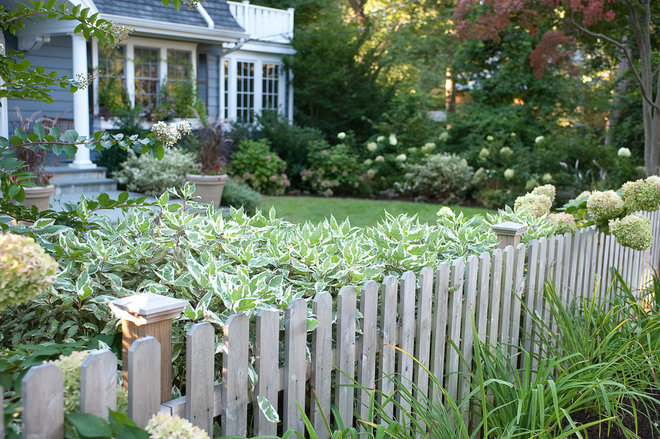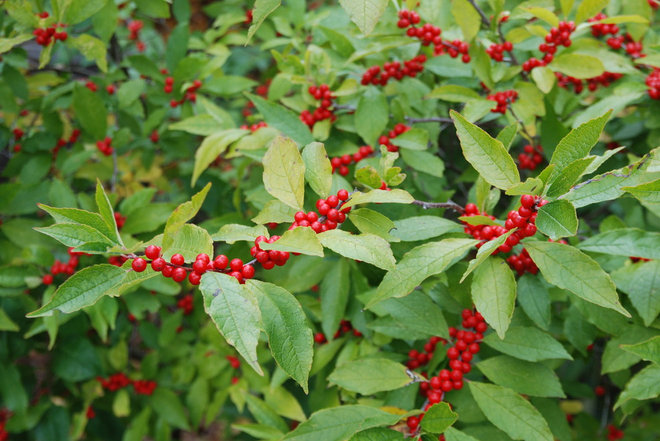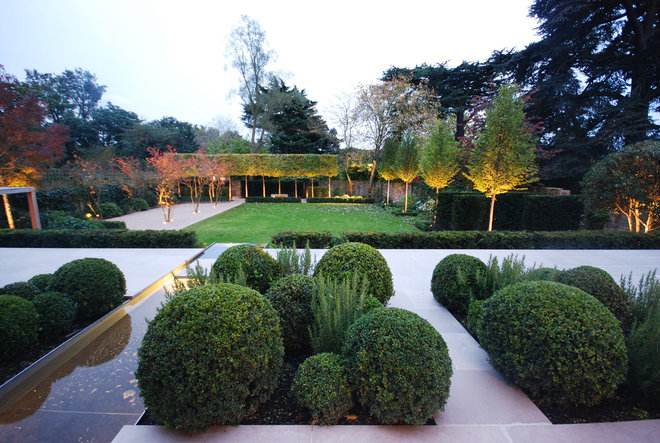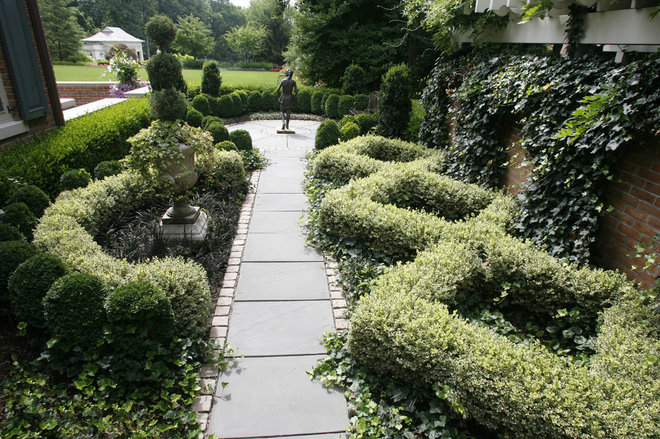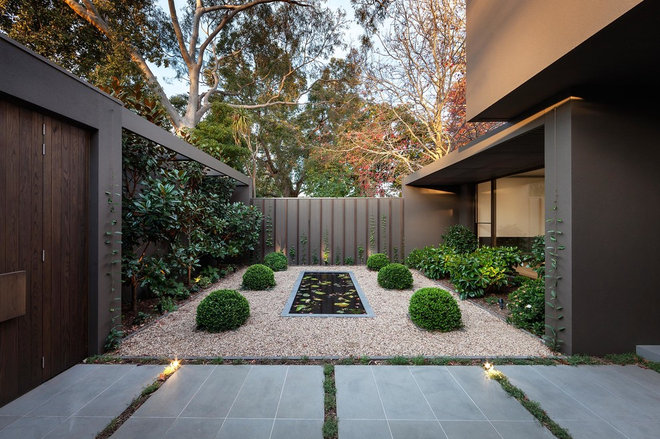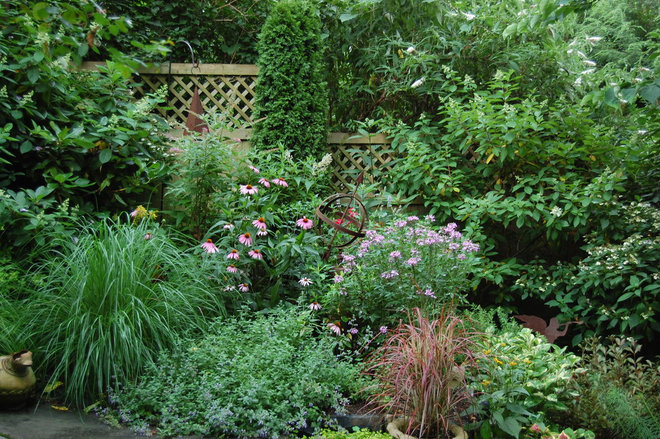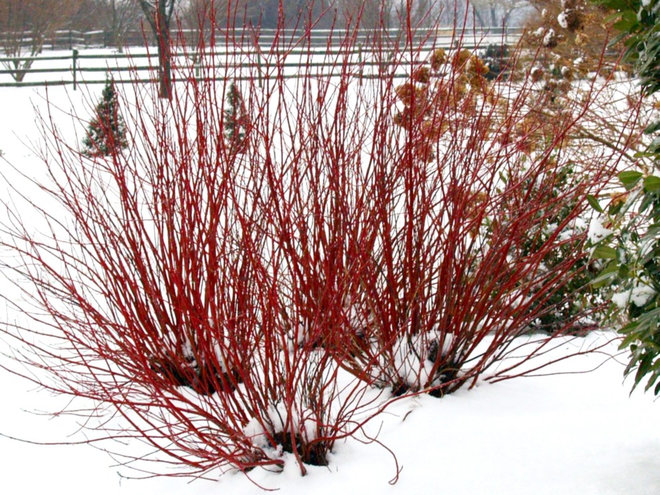Shrubs are ubiquitous throughout our landscapes, many times making up a significant bulk of greenery in the garden. Often used as low-maintenance and long-term plantings around a home’s foundation or as a low walkway edge, these woody plants can do so much more.
Whether you utilize their unusual characteristics, prune them into tight forms or design with them for wildlife, you can get creative with shrubs for a more interesting and unusual garden. Here are ideas for rethinking the basic shrub.
Variegated Ivory Halo dogwood grows in a garden in New York.
1. Use variegated cultivars. Variegation can make a ho-hum shrub more visually interesting because it adds a white or creamy yellow coloration to the leaves. Variegated leaves can be highly contrasting, and the whiteness brings splashes of light to a dark shade garden.
Example species: Variegated Tatarian dogwood (Cornus alba ‘Elegantissima’, USDA zones 2 to 8; find your zone), Ivory Halo dogwood (C. a. ‘Bailhalo’, zones 3 to 7) andvariegated wayfaring tree (Viburnum lantana ‘Variegatum’, zones 4 to 8)
Winterberry (Ilex verticillata, zones 3 to 9) sports bright red berries in winter.
2. Create bird habitat. Many bird species love shrubs because the birds can hunt for bugs and lizards in them while hiding from predators. Smaller birds will nest in woody shrubs, and many shrubs produce berries that are delectable to birds. (But not to other animals; be aware of plants that are toxic to kids or pets.)
The idea of using shrubs for bird habitat isn’t new, but you may want to ask yourself how you can specifically design with shrubs to create a robust habitat for birds. Look for ways to plant near water sources, and pair shrubs with other plants that support wildlife.
See 13 North American native birds and how to attract them to your yard
3. Group together different sizes. Shown here is a grouping of the same species of small broadleaf evergreen shrubs planted at different sizes and pruned into spheres. Yes, this planting is higher-maintenance because it requires a regular pruning schedule. However, it makes for a fun and whimsical look in the garden, with textures and spheres set into a modern paving design with clean lines.
Example species: Littleleaf boxwood (Buxus microphylla, zones 5 to 9) and ‘Golden Gem’ Japanese holly (Ilex crenata ‘Golden Gem’, zones 5 to 8)
4. Channel the French parterre. A parterre garden features flowers growing in patterns and often a low shaped hedge. The parterre is useful in garden design because it creates a formal, finished look while allowing for other more loosely planted flowering or edible plants to be included.
The traditional French potager garden often uses the idea of the parterre, but with edible plants. You can also use the parterre as a border for annuals that change seasonally.
5. Create symmetry. Shrubs can be particularly useful for adding symmetrical elements to a rectilinear space. They can be minimalist, as in this example with low clipped boxwoods, or they can be looser.
Create symmetry with plantings that fit the space well by precisely planning out the spacing and pruning requirements. You can do this yourself with some simple measurements. It’s also helpful to place the shrubs while they are still in their containers. Move them around, making sure you have the spacing and alignment perfect.
6. Mix it up. On the other end of the pruning, shaping and symmetrical spectrum is a wilder-looking garden, with flowing perennials flanked by woody shrubs. Woody plants are an important element of the perennial and meadow garden because they provide structure and interest year-round. Additionally, there are many understory and woodland shrubs that can grow with a spreading form to create a naturalistic planting design.
Learn about the reasons for bringing shrubs into the flower garden
